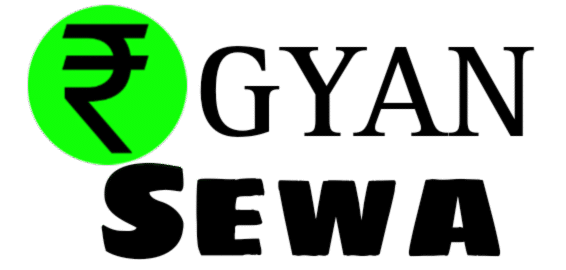Dreaming of owning your own home but daunted by the steep cost of a down payment? You’re not alone—74% of first-time homebuyers cite saving for a down payment as their biggest hurdle, per a 2024 National Association of Realtors (NAR) survey. With median U.S. home prices at $412,000 in 2024 and 20% down payments averaging $82,400, the goal can feel out of reach. But with smart strategies, you can build your savings faster than you think. This article reveals actionable ways to save for a down payment on a house, tailored for 2025’s economic landscape. From budgeting tips to leveraging new savings tools, we’ll guide you toward homeownership with practical steps and real-world examples.
Why Saving for a Down Payment Matters
A down payment is the upfront cash you pay toward a home purchase, typically 5–20% of the price. A larger down payment reduces your mortgage, lowers monthly payments, and often secures better loan terms. In 2025, with interest rates hovering around 6.5% (per Freddie Mac), saving diligently is key to affordability.
The 2025 Housing Market Context
- Rising Home Prices: NAR projects a 3% increase in home prices, pushing median costs to $424,000.
- High Interest Rates: Mortgage rates remain elevated, increasing the value of a substantial down payment.
- First-Time Buyer Programs: Expanded options like FHA loans (3.5% down) help, but savings are still critical.
Step-by-Step Guide to Saving for a Down Payment
Follow these proven strategies to save for a down payment efficiently.
1. Set a Realistic Savings Goal
Determine your target based on home prices in your area and loan requirements.
- 20% Down: Ideal for conventional loans to avoid private mortgage insurance (PMI).
- Lower Options: FHA loans require 3.5% ($14,840 for a $424,000 home), VA/USDA loans may require 0%.
- Example: For a $400,000 home, aim for $80,000 (20%) or $14,000 (3.5%).
Case Study: Mia, a 28-year-old nurse, targeted a $60,000 down payment for a $300,000 home. By saving $1,000/month over 5 years, she reached her goal.
2. Create a Dedicated Budget
Use the 50/30/20 rule (50% needs, 30% wants, 20% savings/debt) to prioritize savings.
- Track Expenses: Apps like YNAB or Mint reveal spending patterns.
- Allocate Savings: Direct 20% of income (or more) to your down payment fund.
- Example: With $4,000 monthly income, save $800/month ($9,600/year).
3. Cut Non-Essential Expenses
Trim discretionary spending to boost savings.
- Subscriptions: Cancel unused services (average savings: $50/month, per 2024 Rocket Money data).
- Dining Out: Cook at home to save $100–$200/month.
- Shopping: Buy secondhand or wait for sales.
4. Boost Your Income
Increase earnings to accelerate savings.
- Side Hustles: Freelancing, ridesharing, or tutoring can add $500–$1,000/month. In 2024, 36% of Americans had side hustles, per SideHusl.
- Negotiate Raises: A 3% raise on a $60,000 salary adds $1,800/year.
- Sell Unused Items: Apps like eBay or Poshmark can yield $200–$500.
Case Study: Liam, a graphic designer, started a freelance gig earning $600/month. He saved all profits, adding $7,200/year to his $40,000 down payment goal.
5. Choose the Right Savings Vehicle
Store your funds in accounts that balance growth and accessibility.
- High-Yield Savings Accounts: Ally or Marcus offer 4.5% APY in 2025, growing $10,000 to $10,450 in a year.
- Certificates of Deposit (CDs): 5% rates for 1–3 years, ideal for fixed timelines.
- Money Market Accounts: Combine flexibility and 4%+ returns.
6. Leverage First-Time Homebuyer Programs
Explore programs to reduce down payment needs.
- FHA Loans: 3.5% down with credit scores as low as 580.
- VA/USDA Loans: 0% down for eligible veterans or rural buyers.
- State Grants: Many states offer down payment assistance (e.g., California’s CalHFA provides up to 3% aid).
7. Automate and Stay Disciplined
Automate savings to avoid temptation and ensure consistency.
- Auto-Transfers: Schedule monthly transfers to your down payment account.
- Separate Account: Keep funds distinct from daily spending.
- Track Progress: Celebrate milestones (e.g., $10,000 saved) to stay motivated.
Table: Down Payment Savings Strategies
| Strategy | Action |
|---|---|
| Set Goal | Target 3.5–20% of home price based on loan type. |
| Budget | Use 50/30/20 rule, save 20%+ of income. |
| Cut Expenses | Eliminate subscriptions, reduce dining out. |
| Boost Income | Start side hustle, negotiate raise. |
| Savings Vehicle | Choose high-yield savings or CDs (4–5% APY). |
| Use Programs | Explore FHA, VA, or state assistance. |
Challenges in 2025
- Rising Costs: Inflation (3.2% in 2024) erodes savings. Counter with high-yield accounts.
- High Interest Rates: Larger down payments offset costly loans.
- Income Volatility: Gig workers should save during high-earning months.
- Temptation to Spend: Automate savings to maintain discipline.
What’s New in 2025: Savings Trends
- AI Budgeting Tools: YNAB and Rocket Money use AI to optimize savings, with users saving 15% more in 2024.
- Micro-Saving Apps: Qapital rounds up purchases, saving $30–$50/month effortlessly.
- Down Payment Apps: Platforms like Downpay connect savers with matched contributions from employers or family.
- Green Home Incentives: Tax credits for energy-efficient homes (up to $2,000) free up funds for down payments.
Pros and Cons of Saving for a Down Payment
| Aspect | Pros | Cons |
|---|---|---|
| Financial Impact | Lowers mortgage, avoids PMI. | Ties up funds, limiting liquidity. |
| Accessibility | High-yield accounts offer growth and access. | Takes years to save substantial amounts. |
| Loan Terms | Larger down payments secure better rates. | Competing goals (e.g., debt repayment) delay savings. |
| Discipline | Builds strong financial habits. | Requires lifestyle sacrifices. |
FAQ Section
How Much Should I Save for a Down Payment?
Aim for 3.5–20% of the home price, depending on your loan. For a $424,000 home (2025 median), that’s $14,840 (FHA, 3.5%) to $84,800 (conventional, 20%). A 20% down payment avoids PMI, saving $100–$200/month. Set a timeline (e.g., 5 years) and save monthly—$1,000/month reaches $60,000 in 5 years. Use high-yield savings (4.5% APY) to grow funds.
What Are the Best Ways to Save for a Down Payment?
Save for a down payment by budgeting (50/30/20 rule), cutting expenses ($50–$200/month on subscriptions/dining), and boosting income via side hustles ($500+/month). Automate transfers to a high-yield savings account (Ally, 4.5% APY). Explore first-time buyer programs like FHA loans (3.5% down). Track spending with YNAB to stay disciplined and reach your goal faster.
How Long Will It Take to Save for a Down Payment?
It depends on your goal and savings rate. For a $60,000 down payment, saving $1,000/month takes 5 years; $500/month takes 10 years. Boost income with side hustles or raises to shorten the timeline. Use high-yield accounts (4–5% APY) to grow savings. For example, $500/month at 4.5% grows to $67,500 in 10 years, per Bankrate’s calculator.
Can First-Time Homebuyer Programs Help?
Yes, programs like FHA loans (3.5% down), VA/USDA loans (0% down), and state grants reduce savings needs. For a $400,000 home, an FHA loan requires $14,000 vs. $80,000 for 20%. Check eligibility on HUD.gov or state housing websites (e.g., CalHFA). Combine with high-yield savings and budgeting to cover closing costs or smaller down payments.
What Mistakes Should I Avoid When Saving?
Don’t dip into your down payment fund for non-emergencies, as it slows progress. Avoid low-yield accounts (use 4.5%+ APY options). Don’t neglect other goals—balance debt repayment and emergency savings. Overestimating income or under-budgeting can derail plans. Use apps like Mint to track spending and automate savings to stay on course.
Conclusion
Saving for a down payment on a house in 2025 is achievable with discipline and strategy. Set a clear goal, budget wisely, cut expenses, boost income, and leverage high-yield accounts or first-time buyer programs. Tools like AI budgeting apps and down payment platforms make it easier than ever. Start today—even $100/month adds up. Share your savings journey in the comments or sign up for our newsletter for more homebuying tips!
Suggested Internal Links
Suggested External Links
Suggested Visuals
- Infographic on down payment savings timeline.
- Video explainer on FHA vs. conventional loans.

